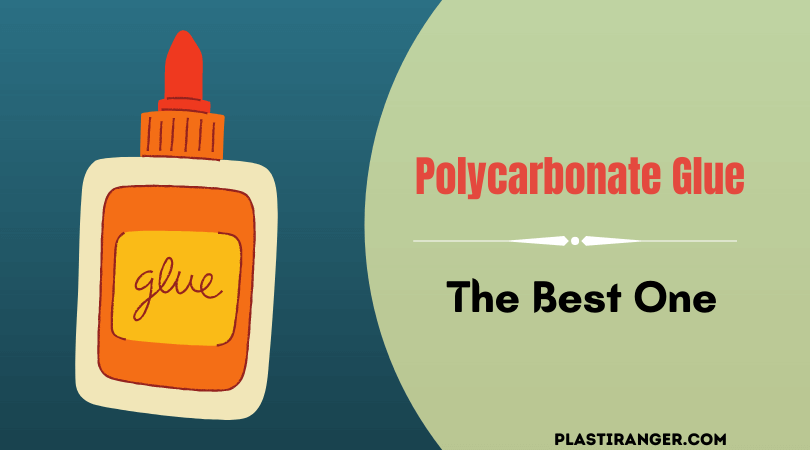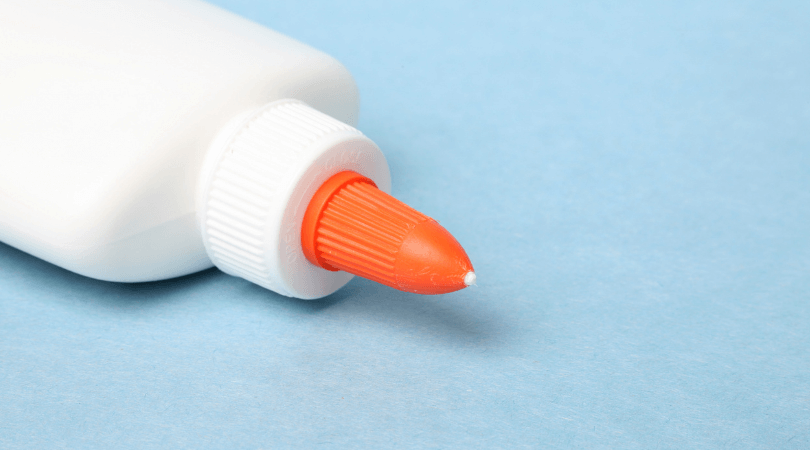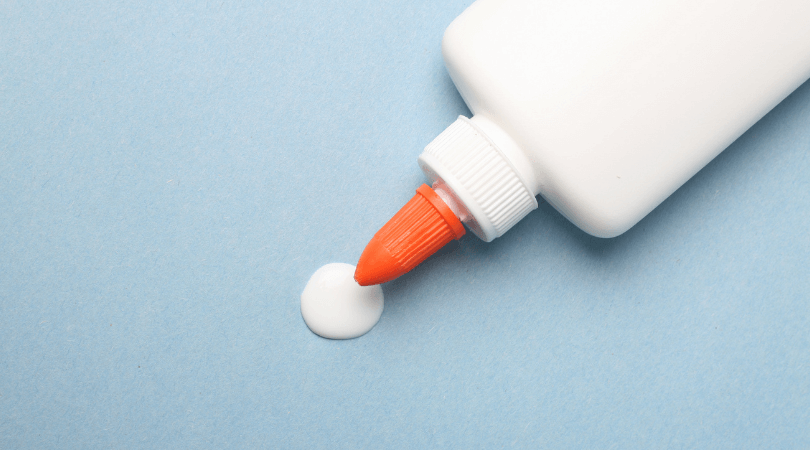Greetings, everyone! Today, I’m thrilled to provide an insightful guide on polycarbonate glue. Continue reading to delve deeper into this fascinating subject.
The Best Polycarbonate Glue
The finest polycarbonate glue offers superior bonding power, rapid curing, excellent heat resilience, and a transparent finish. It provides a durable, long-lasting bond between polycarbonate surfaces, making it an optimal adhesive solution.
Polycarbonate, or Lexan, as we all know, is a highly beneficial plastic material popular for its optical clarity, high durability, and impact resistance. In terms of brute impact resistance, polycarbonate is 200 times stronger than glass making its strength equivalent to many metals.
However, when it comes to gluing Lexan, things aren’t that bright. This means that not a single everyday glue can adhere to polycarbonate.
Standard solvents might cause polycarbonate to undergo “crazing,” which happens when chemicals rupture the polymer’s microscopic bonds, causing tiny cracks. At the same time, that will not damage polycarbonate and make it lose its integrity but will create an unpleasant appearance.
Fortunately, effective industrial adhesives or polycarbonate glue options are available, which can make gluing or fusing polycarbonate effective and easy.
Let’s go through the best adhesives for polycarbonate one by one. But first, shall we look at how to prepare polycarbonate for gluing?
Surface Preparation for Glueing Polycarbonate
Polycarbonate surface preparation is relatively easy. It has reasonably high surface energy for surface wetting. If it’s new, it doesn’t need surface preparations and can be bonded “As Received.” However, some work must be done if the polycarbonate piece is old.
Before gluing, ensure the polycarbonate is free of containment; rinse it with lukewarm water to remove any sand or dirt that could damage the polycarbonate without scraping against it.
Then mix the water with a small amount of dish soap. Dip a cotton cloth or sponge and gently rub the polycarbonate to remove excess contaminants.
Then, rinse the polycarbonate again; at this point, your polycarbonate is ready for gluing.
INTERESTING READ – How to Cut Polycarbonate | A Complete Analysis
Polycarbonate Glue: Superglue
Superglue, a cyanoacrylate adhesive, is an effective and easily accessible way of bonding polycarbonate. It offers a rapid cure and is ideal for small surface areas and large production lines.
Superglue works best in a well-ventilated environment. The fumes of cyanoacrylate adhesives can be toxic if inhaled in high quantities. Also, these adhesives tend to have a less pungent smell.
Don’t apply too much Superglue; it can have adverse effects like crazing or blooming, Minimize the liquid adhesive or cure it with an activator.
At last, don’t drown any polycarbonate bonded with Superglue, as it can weaken the bond.
To bond polycarbonate perfectly, follow these steps:
- Apply Superglue on clean polycarbonate edges that need to be glued.
- The adhesive will bond immediately – less than a minute after applying the glue, hold the pieces of polycarbonate together until they can support their weight. This may take around a minute.
- Let the bond dry for 48 hours before putting any pressure on it.
Lexan Glue: Epoxide Glue
Epoxide glue, aka epoxy, is another accessible and cost-effective way to glue polycarbonate. This method is also used for quick fixes or bonding polycarbonate, specifically ceramic. Epoxide glue offers outstanding environmental resistance and is available in various forms depending on the user’s needs.
However, while being beneficial in some cases, Epoxide glue is not always suitable. It tends to leave a mark on its applications and doesn’t have much difference in bonding strength compared to Superglue. Using epoxide glue outdoors is not advisable because it will turn yellow with continued exposure to UV rays.
Stress-cracking is likely but can be minimized substantially if proper mixing with the correct ratios so the adhesive cures fully.
Although using epoxy as polycarbonate as the glue is relatively simple, we shall still go through the procedure to utilize it seamlessly:
- While using two-part epoxy, mix both parts properly by following the steps written behind the package.
- Apply epoxy to the clean polycarbonate area you wish to glue.
- Join the other piece of polycarbonate you wish to bond, and it still for 5 to 10 minutes, and let the bond become firm.
- Allow it to dry for at least 3-4 days before putting any significant pressure on it. It might even take a week for the epoxy to dry fully.
Gluing Polycarbonate with Methyl Methacrylate
Methyl Methacrylate is a fantastic option for fusing polycarbonate as it creates strong and resilient bonds.
Some users have discovered that the polycarbonate will break before the bond if they pull the mangle or polycarbonate apart.
One downside of Methyl Methacrylate is that it’s a niche product that is not readily available easily unless a user orders it online ahead of time.
Like Superglue, Methyl Methacrylate must not be used outdoors but in well-ventilated rooms, as its fumes can be toxic if inhaled in large amounts. Follow these below-mentioned steps to do it perfectly:
- Apply Methyl Methacrylate on a clean piece of polycarbonate in the area you wish to join.
- Let the methyl methacrylate soak for a minute. Tap on it lightly using wood or metal – if the plastic feels sticky, it’s ready to join.
- Join the pieces of polycarbonate together and hold them hard until they can support their weight. It should take about 5 minutes, but the timing may vary.
- Once the polycarbonate can support its weight, leave it free for 48-72 hours to dry, and it will be bonded.
Polycarbonate Glue: UV Curable Adhesives
Visible light-curing UV adhesives are a fantastic choice for joining polycarbonate if their purpose lies outdoors. It is essential to select a UV that cures in the 400-420µm wavelength spectrum due to the UV stabilization properties of most polycarbonate. These adhesives provide a clear, non-yellowing, and strong bond, and it is highly advisable to use them.
What About Bonding Polycarbonate with Gorilla Glue?
It is possible to bond polycarbonate with another plastic-liquid polyurethane or gorilla glue. Polyurethanes should be used when the temperature is below – as low as -40F – as they will not become brittle like other adhesives. It’s also resistant to salt, oil, gas, and chemicals.
The bonding will not be as good as methyl methacrylate regarding clarity and strength, but people prefer gorilla glue for its unique physical properties. Similar guidelines like other glue should be followed while using gorilla glue, and it must be only used in a well-ventilated area. Follow the below-mentioned process for the best results:
- Apply the glue to the clean polycarbonate area where you wish to apply the adhesive using a foam brush or an applicator.
- Hold the polycarbonate tightly till it joins; it may take up to 5 minutes.
- Once it can support its weight, let it dry for 24-48 hours. Please don’t rush the drying time even if it looked dry before, given it is not ready for heavy loads.
What is Stress Cracking?
Stress cracking is a general polycarbonate phenomenon, particularly vulnerable to solvents and volatile chemicals. Polycarbonate contributes to only 1% of global plastic consumption but is responsible for 10-15% of field failures, and mostly, the blame goes to stress cracking.
It’s a persistent problem but can be minimized if the adhesive is mixed correctly and cured well. Additional use of care upon assembling can also reduce stress-cracking substantially.
FAQs
Below are the frequently asked questions on polycarbonate adhesive. Let’s dig deep to know more.
How to join polycarbonate and acrylic?
Polycarbonate and acrylic can be glued together, but certain things must be taken care of. The best glue for bonding them together is either Gorilla glue or Superglue. Similar guidelines must be followed to join polycarbonate and acrylic sheets ideally. Take note, Always use gorilla glue and Superglue in well-ventilated areas because their fumes can be toxic to health if inhaled in large amounts.
What is the difference between polycarbonate and Lexan?
Polycarbonate and Lexan are the same and have no difference whatsoever. Polycarbonate is thermoplastic’s basic nake, and Lexan is the same brand name. Over time Lexan became the general term for polycarbonate.
Can I use silicon sealant on polycarbonate?
Clear silicone adhesive will bond virtually everything to anything in almost all conditions. It provides a strong, flexible, watertight seal to your polycarbonate sheets underwater and in the rain. This option is viable as polycarbonate can expand and contract at different temperatures.
Can you glue polycarbonate to wood?
Polycarbonate and wood can be glued, but practice like that is not advisable, leading to damage and insufficient repairs. I won’t be able to suggest any specific type of glue, but if you need to join wood and polycarbonate, follow the manufacturer instructions extensively to choose the most appropriate and effective adhesive for the job.
How to bond polycarbonate and metal?
Loctite Plastic Bonder is the best adhesive for bonding polycarbonate with metals like aluminum and stainless steel. Its specialized acrylic formula and properties combine two components to produce a robust, impact-resistant bond that sets in less than half an hour.
Suggested Read –
- Plexiglass Vs. Acrylic | What are the Differences and Similarities?
- Polycarbonate Vs. Acrylic | What are the Differences and Similarities?
- Plastics Vs. Polymers | What are the Differences?
- What is Bakelite?: The Plastic That Changed the World
- What is TPE Material? | The Definitive Guide
- 6 Best Plastic Molding Techniques | A Complete Analysis
- When Was Plastic Invented? | The History of Plastics
- What is UHMW Plastic Material? | The Definitive Guide
The Conclusion
I want to say that Polycabonte glue and gluing polycarbonate efficiently. Gluing polycarbonate, in general, is simple compared to acrylic or any other plastic material, for that matter. Following the process steps correctly, you will sail through gluing polycarbonate quickly. That said, always consult the manufacturer for salient tips about bonding.
Thanks for reading. Kindly share your thoughts and questions in the comment section. Have a wonderful day.
Quick Navigation





I have 3 Stainless tables upon which I want to glue white polycarbonate(Starboard?) What adhesive should I use and what about surface prep?
I also wonder if 3M 5200 would do the job, as I have used it often in marine applications and find it excellent in those uses